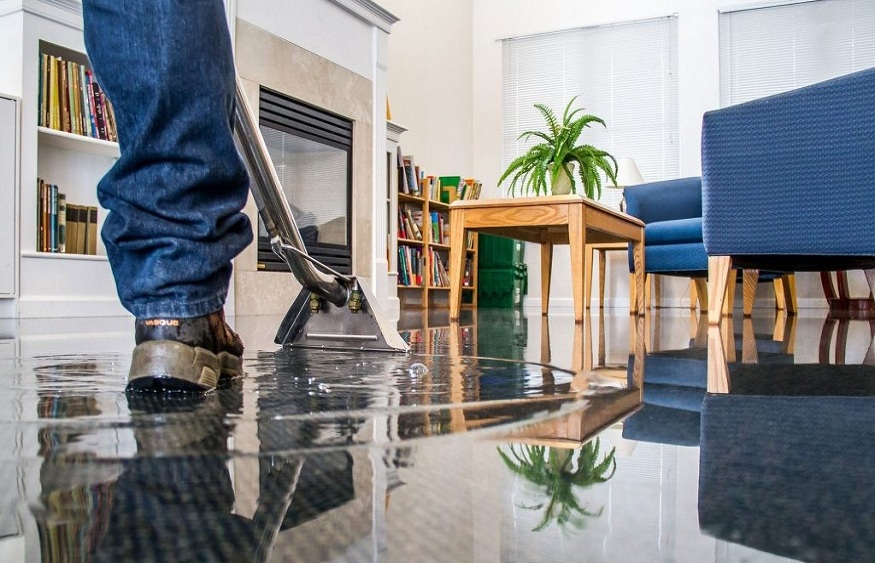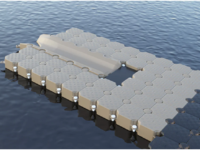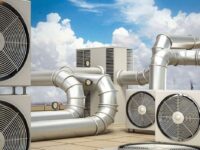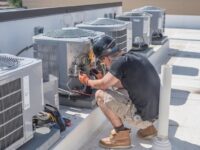What to Know about Sewage Cleanup and Water Damage Restoration

Water damage can be a homeowner’s worst nightmare. From leaking pipes to natural disasters like floods, water damage can cause significant harm to a property. In some cases, water damage can also lead to sewage backup, creating a hazardous situation that requires immediate attention. Understanding the process of sewage cleanup and water damage restoration is crucial for homeowners to know how to handle these situations effectively and minimize damage.
Understanding Sewage Cleanup
Sewage cleanup refers to the process of removing and properly disposing of waste materials and contaminated water that results from a sewage backup or overflow. It is a hazardous task that should be handled by professionals with the necessary training and equipment. Sewage cleanup typically involves the extraction and removal of sewage-contaminated water, thorough cleaning and sanitization of affected areas, and ensuring proper disposal of waste materials.
Causes of Water Damage
Leaking Pipes and Plumbing Issues
One of the most common causes of water damage is leaking pipes or plumbing issues. Over time, pipes can deteriorate or develop leaks due to corrosion, age, or improper installation. These leaks can lead to water damage in walls, ceilings, and floors, causing structural issues if left unaddressed.
Heavy Rainfall and Flooding
Heavy rainfall and flooding can cause extensive water damage, especially if a property is not adequately prepared or has poor drainage systems. Flooding can result in water entering basements, crawl spaces, and ground-level areas, leading to structural damage and the growth of mold and mildew.
Faulty or Damaged Appliances
Appliances such as washing machines, dishwashers, and water heaters can malfunction or develop leaks, causing water damage. A faulty hose or seal can result in water leakage, which may go unnoticed until significant damage has already occurred.
Sewage Backup and Overflow
Sewage backup and overflow can occur due to a blockage in the sewer line or septic system. This can result in sewage-contaminated water backing up into basements or other areas of a property. Sewage contains harmful bacteria and viruses that pose serious health risks, requiring immediate attention and professional sewage cleanup.
Roof Leaks and Poor Drainage Systems
Roof leaks can lead to water damage if not promptly addressed. A damaged or improperly installed roof can allow water to seep into the interior of a property, causing damage to ceilings, walls, and insulation. Poor drainage systems can also contribute to water damage, as water may accumulate near the foundation of a building and seep into the basement or lower levels.
Signs of Water Damage
Recognizing the signs of water damage is crucial for early detection and prevention of further damage. Some common signs of water damage include:
- Water stains or discoloration on walls, ceilings, or floors
- Musty odors
- Visible mold or mildew growth
- Warped or buckled flooring
- Damp or wet areas
- Persistent plumbing issues such as recurring leaks or drainage problems
Steps for Water Damage Restoration
Water damage restoration involves a series of steps to mitigate damage and restore affected areas to their pre-damage condition. Here are the typical steps involved:
1. Assess the extent of the water damage
Before starting the restoration process, it is essential to assess the extent of the water damage. This assessment helps determine the best course of action and identify any potential safety hazards.
2. Extract water and remove excess moisture
The next step is to extract standing water and remove excess moisture from the affected areas. Specialized equipment such as pumps, wet vacuums, and dehumidifiers are used to expedite this process.
3. Dry and dehumidify the affected area
After water extraction, the affected area needs to be thoroughly dried and dehumidified. This step helps prevent further damage and inhibits the growth of mold and mildew. Industrial fans, dehumidifiers, and moisture meters are commonly used in this stage.
4. Clean and sanitize the area
Once the affected area is dry, it needs to be thoroughly cleaned and sanitized. This step helps eliminate any bacteria, viruses, or contaminants that may be present due to the water damage. Specialized cleaning agents and equipment may be used to ensure proper sanitation.
5. Restore and repair damaged materials and belongings
The final step in water damage restoration is to restore and repair any damaged materials or belongings. This can involve repairing or replacing damaged drywall, flooring, insulation, and furniture. It is essential to ensure proper restoration to prevent any long-term issues such as mold growth or structural damage.
Importance of Professional Help
While minor water damage can sometimes be handled by homeowners, it is generally advisable to seek professional help for sewage cleanup and extensive water damage restoration. Professionals have the expertise, experience, and specialized equipment to handle these situations safely and efficiently. They can also ensure thorough cleanup, sanitation, and restoration to prevent any long-term issues.
Prevention of Water Damage
Preventing water damage starts with taking proactive measures to safeguard your property. Here are a few essential prevention tips:
- Regularly inspect and maintain plumbing systems
- Address any leaks or plumbing issues promptly
- Direct rainwater away from the foundation with proper grading and gutters
- Install a sump pump in basements or low-lying areas
- Ensure proper ventilation and airflow in bathrooms and kitchens
Safety Precautions during Sewage Cleanup
Wearing Protective Gear
When dealing with sewage cleanup, it is crucial to wear appropriate protective gear to prevent exposure to harmful bacteria and viruses. This may include gloves, masks, goggles, and protective clothing.
Proper Ventilation
Ensure proper ventilation during sewage cleanup to minimize exposure to potentially hazardous fumes. Open windows and doors, and use fans or exhaust systems to improve airflow.
Avoiding Direct Contact
Avoid direct contact with sewage-contaminated water and materials. Use tools or equipment for handling and disposing of contaminated items.
Disposing of Contaminated Materials
Properly dispose of all contaminated materials in accordance with local regulations and guidelines. This may involve using sealed bags or containers and arranging for appropriate waste disposal.
Cleaning and Disinfecting Tools and Equipment
After sewage cleanup, it is essential to thoroughly clean and disinfect all tools and equipment used during the process. This helps prevent cross-contamination and the spread of bacteria and viruses.
Cleaning and Disinfecting Strategies
Effective cleaning and disinfecting strategies are essential during sewage cleanup and water damage restoration. Here are some strategies to consider:
- Use appropriate cleaning agents that target bacteria and viruses
- Follow manufacturer instructions for dilution and application
- Ensure thorough coverage of affected surfaces
- Allow sufficient contact time for the disinfectant to work
- Regularly clean and disinfect affected areas until fully sanitized
Conclusion
Sewage cleanup and water damage restoration are critical processes for homeowners to understand. By knowing the causes of water damage, recognizing the signs, and taking preventive measures, homeowners can minimize the risk of extensive damage. In cases of sewage backup or significant water damage, professional help is strongly recommended to ensure safe and thorough cleanup and restoration. Remember to prioritize safety precautions and follow effective cleaning and disinfecting strategies to minimize health risks during sewage cleanup. With the right knowledge and prompt action, homeowners can effectively address water damage and restore their properties to their pre-damage condition.
Publisher Details:
Save The Day Restoration
2424 Gundry Ave, Signal Hill, CA 90755, United States
(866) 352-4603
savethedayrestoration.com
[email protected]
Understanding sewage cleanup and water damage restoration is crucial for homeowners facing these challenges. Effective cleaning and disinfecting strategies are vital. With knowledge and action, homeowners can minimize damage and restore their properties effectively. Trust Save The Day Restoration for professional water damage restoration in Torrance, CA.
Read their insightful blog on Need Commercial Water Damage Restoration In Winter?





